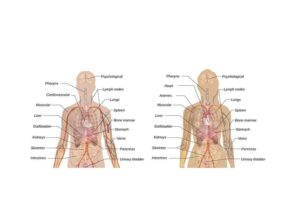Schema Markup, particularly the Instructional Schema Markup (ISM), significantly enhances online content visibility and user engagement for step-by-step guides. By using structured data formats like HowTo JSON-LD, this markup highlights key elements such as topic, steps, educational level, and multimedia, making tutorials more accessible and interactive on search results pages. It improves SEO tagging, increases click-through rates, and fosters better user comprehension, ultimately driving higher traffic and satisfaction. Implementing ISM with clear content, relevant visuals, and regular updates ensures search engines accurately interpret and present educational content effectively.
In today’s digital landscape, enhancing search results with rich, structured content is key to standing out. Instructional Schema Markup, a powerful tool, allows you to transform step-by-step tutorials into easily digestible, visually appealing snippets in search engine results pages (SERPs). This article delves into the benefits of Schema Markup for tutorials, introducing HowTo schema specifically. We’ll guide you through implementing structured content, incorporating images, adding context, and best practices to elevate your instructional materials and improve user engagement.
- Understanding Schema Markup and Its Benefits for Search Results
- Introduction to HowTo Schema: A Structured Approach to Tutorials
- Implementing Step-by-Step Instructions with Marked-Up Content
- Enhancing Display: Incorporating Images and Visual Elements
- Adding Instructional Context for Better User Experience
- Best Practices and Tips for Effective Schema Markup Application
Understanding Schema Markup and Its Benefits for Search Results

Schema Markup is a powerful tool that provides additional context to search engines about the content on a webpage. By using structured data in the form of schemas, we can help search engines better understand and display our content, leading to enhanced visibility and click-through rates in search results. One of the most beneficial schema types for instructional content, such as step-by-step guides and tutorials, is the Instructional Schema Markup.
This markup enables us to highlight key elements like the topic, steps involved, and educational level, making it easier for potential users to scan and assess the relevance of the guide. When combined with relevant images and descriptive text, Instructional Schema Markup can significantly improve the overall user experience and search optimization. Additionally, implementing HowTo JSON-LD or utilizing the appropriate SEO tagging techniques further enhances the structured data, ensuring that search engines can accurately interpret and present the content in a visually appealing manner within search results pages.
Introduction to HowTo Schema: A Structured Approach to Tutorials

The Instructional Schema Markup revolutionizes how search engines understand and display educational content. It introduces a structured approach to representing tutorials, recipes, and how-to guides using the HowTo schema. This markup language transforms raw text into a rich data format that includes step-by-step instructions, required tools, and expected outcomes. By leveraging HowTo JSON-LD or other compatible methods like Tutorial Schema Markup, developers and content creators can enhance search visibility and user experience.
This innovative technique not only improves HowTo SEO Tagging but also enriches search results with relevant visual elements, such as images and videos, directly within the context of the instructional content. This visual enhancement makes tutorials more engaging and accessible, guiding users through each step effectively. As a result, web pages marked up with HowTo schemas are likely to capture more user interest and interactivity, ultimately driving better search rankings.
Implementing Step-by-Step Instructions with Marked-Up Content

Implementing step-by-step instructions with marked-up content using schemas like HowTo, Tutorial, or Guide can significantly enhance search engine visibility and user experience. By structuring your content according to these semantic markups, you provide search engines with a clear understanding of your tutorial’s purpose and hierarchy. This, in turn, allows them to display rich snippets in search results, including images, step-by-step breakdowns, and even ratings.
For instance, the HowTo schema enables you to specify individual steps, required tools, and expected outcomes. It also accommodates multimedia elements like videos or images within each step, making your tutorial more engaging. Moreover, integrating Tutorial or Guide schemas provides a structured framework that highlights key aspects such as preparation, ingredients (for recipes), or specific techniques, ensuring users get the information they need efficiently.
Enhancing Display: Incorporating Images and Visual Elements

Incorporating visual elements significantly enhances the display and appeal of step-by-step content marked up with Instructional Schema Markup. By integrating images and other visual aids, search engines can better understand the context and purpose of each step, leading to richer results in search rankings. Visuals not only make the content more engaging for users but also assist in conveying complex instructions more effectively. When a user encounters a HowTo with high-quality images, they are more likely to click through, resulting in increased engagement metrics that positively impact SEO.
The use of Schema for Guides, specifically the HowTo schema, allows for structured data to be presented, ensuring search engines can interpret and display content accurately. This results in what is known as a Rich Result for HowTo queries, where relevant information such as ingredients, tools required, and step-by-step instructions are highlighted. By implementing HowTo SEO Tagging effectively, creators can ensure their instructional content stands out in crowded search result pages, driving more traffic to their site and improving user satisfaction with the displayed results.
Adding Instructional Context for Better User Experience

Adding Instructional Context Enhances User Engagement
When structuring step-by-step content using schema markup, incorporating instructional context goes beyond mere task description. It involves providing detailed explanations, tips, and visual cues that guide users through each step, ensuring a seamless and satisfying experience. This contextual information is crucial for search engines to understand the intent behind the content, thereby improving the displayed results. By including relevant details, such as preparation time, tools required, and potential challenges, you create a rich result for users seeking instructional guidance.
Schema markup, specifically the HowTo JSON-LD format, allows you to embed this contextual data directly into your web pages. This not only enhances search engine visibility but also enables search engines to display structured information as a rich result, featuring images and step-by-step breakdowns within the search results page. Such visual representations significantly improve user comprehension, encouraging clicks and longer dwell times.
Best Practices and Tips for Effective Schema Markup Application

When applying Instructional Schema Markup, such as HowTo JSON-LD, it’s crucial to prioritize clarity and accuracy. Start by thoroughly understanding your content; each step should be detailed and actionable. Use clear language that avoids jargon, ensuring accessibility for a wide audience. Incorporate relevant images at strategic points to enhance visual learning, providing context that complements the textual instructions.
For effective Schema for Guides implementation, maintain a structured format. Each step within the guide should be represented as a separate item in the JSON-LD script, facilitating easier parsing by search engines. Regularly update your markup as content evolves to ensure accuracy and keep pace with changes in your tutorial or instructional materials.
